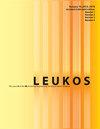On Illumination Vector Quantities Due to Area Light Sources: Comparison of Two Calculation Approaches
IF 2.6
2区 工程技术
Q2 CONSTRUCTION & BUILDING TECHNOLOGY
引用次数: 0
Abstract
ABSTRACT The concept of illumination vector quantities at a given point in three-dimensional space has been proposed since long time ago, but it is mostly described for scenes with point light sources. In real scenes with area light sources, numerical approximations are required to estimate the illumination vector quantities, which can be done by discretising the area into an array of point sources. Two different approaches are proposed in this study; Approach 1 is applicable in the design phase, where the positions of the source and receiver point are exactly known. Approach 2 is applicable during field measurement, based on the obtained cubic illuminances. This study aims to determine the required number of point source elements in the computation and to investigate the difference between both calculation approaches. The proposed concept is demonstrated using a scenario with horizontal, square source and a scenario with vertical, rectangular source, with various luminous intensity distribution patterns, by observing various illumination vector quantities. Grid sensitivity analyses suggest that the largest grid size satisfying the five-to-one approximation rule shall yield quantities that converge within no more than 5% to the final value. For a given size of area source, at a given distance, the differences of illumination vector quantities obtained from both calculation approaches are expected to be approximately the same, regardless the luminous intensity distribution. The estimation of cylindrical illuminance is generally more accurate than that of scalar illuminance.区域光源照明矢量:两种计算方法的比较
摘要:三维空间中给定点的照明矢量的概念很早以前就被提出,但主要是针对点光源场景进行描述。在具有区域光源的真实场景中,需要数值近似来估计照明矢量,这可以通过将区域离散为点源阵列来实现。本研究提出了两种不同的方法;方法1适用于设计阶段,此时信号源和接收点的位置是已知的。方法2适用于现场测量,基于获得的立方照度。本研究旨在确定计算中所需点源元素的数量,并研究两种计算方法之间的差异。通过观察不同的照明矢量,使用具有不同发光强度分布模式的水平方形光源场景和垂直矩形光源场景来演示所提出的概念。网格敏感性分析表明,满足五比一近似规则的最大网格尺寸应产生的数量收敛于最终值的范围不超过5%。对于给定尺寸的面积光源,在给定距离下,无论光强分布如何,两种计算方法得到的照明矢量的差值预计大致相同。圆柱照度的估计通常比标量照度的估计更准确。
本文章由计算机程序翻译,如有差异,请以英文原文为准。
求助全文
约1分钟内获得全文
求助全文
来源期刊

Leukos
工程技术-光学
CiteScore
7.60
自引率
5.60%
发文量
19
审稿时长
>12 weeks
期刊介绍:
The Illuminating Engineering Society of North America and our publisher Taylor & Francis make every effort to ensure the accuracy of all the information (the "Content") contained in our publications. However, The Illuminating Engineering Society of North America and our publisher Taylor & Francis, our agents, and our licensors make no representations or warranties whatsoever as to the accuracy, completeness, or suitability for any purpose of the Content. Any opinions and views expressed in this publication are the opinions and views of the authors, and are not the views of or endorsed by The Illuminating Engineering Society of North America and our publisher Taylor & Francis. The accuracy of the Content should not be relied upon and should be independently verified with primary sources of information. The Illuminating Engineering Society of North America and our publisher Taylor & Francis shall not be liable for any losses, actions, claims, proceedings, demands, costs, expenses, damages, and other liabilities whatsoever or howsoever caused arising directly or indirectly in connection with, in relation to, or arising out of the use of the Content. Terms & Conditions of access and use can be found at http://www.tandfonline.com/page/terms-and-conditions .
 求助内容:
求助内容: 应助结果提醒方式:
应助结果提醒方式:


